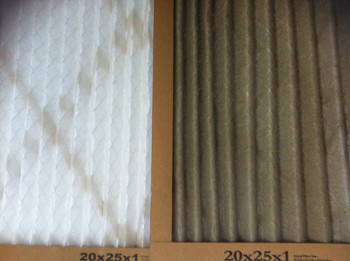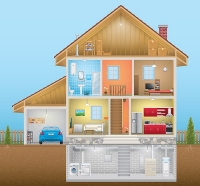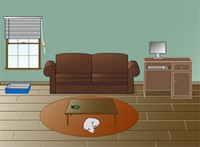Healthy Homes - Living Room
Health and safety tips
- Keep your home smoke-free.
- Vacuum carpets and floors frequently.
- Protect your children from lead-based paint.
- Move blind cords out of the reach of children.
- Inspect chimneys, gas-burning furnaces or fireplaces yearly. Open flues when fireplaces are in use.
- Choose properly sized wood stoves that are certified to meet EPA standards. Make certain that doors on all wood stoves fit tightly.
- Store fire wood away from the house to prevent problems with termites, mice and other pests.
Green tips
- Use EPA Energy Star certified electronics.
- Use of energy-efficient windows, doors and skylights can help lower a home's heating, cooling and lighting costs.
- Open curtains and blinds during the day to allow for natural sunlight. Light colored or loose-weave curtains allow sunlight into the room while maintaining privacy.
Secondhand smoke
Secondhand smoke is a known health hazard. Breathing in secondhand smoke can lead to serious health problems such as respiratory tract infections, and chronic illnesses such as asthma and lung cancer. Sadly, the home is the place where children are the most exposed to secondhand smoke.
Children are at great risk to secondhand smoke. Almost 60 percent of U.S. children aged three to eleven years—or almost 22 million children—are exposed to secondhand smoke.
Secondhand smoke exposure in the home has been consistently linked to a significant increase in both heart disease and lung cancer risk among adult nonsmokers. For more information on secondhand smoke visit the Surgeon General's website.
To stop smoking, the Tennessee Tobacco Quitline can help. The Surgeon General’s website is also a great resource for information on tobacco.
Lead-based paint
In homes built prior to 1978, there is an increased risk of having lead-based paint. If small children ingest lead-based paint chips or dust during hand-to-mouth behavior, they could be exposed to lead, a well known health hazard. If you are remodeling an old home, the risk could be even higher. Lead check test kits are readily available from home and hardware stores. For more information about preventing childhood exposure to lead, visit the Tennessee Childhood Lead Poisoning Prevention Program.
Keep it clean – air filters
One of the Healthy Homes principles is to keep your home clean and free of clutter. Sweeping, mopping, and dusting are all important ways to keep your home clean. Change your Heating, Ventilation, and Cooling system’s (HVAC) air filters on a regular basis. Use a good quality pleated air filter to remove dust from your family's air. Vacuum or wipe vent louvers and ceiling fans to remove dust. Maintaining good indoor air quality is especially important if a family member has a medical condition such as asthma, allergies, emphysema or Chronic Obstructive Pulmonary Disease (COPD) .
Radon
Radon is an odorless, tasteless, colorless gas that is naturally occurring across Tennessee. It can be present in any room in your home, including your living room. The Tennessee Department of Health and the Tennessee Department of Environment and Conservation work together to track radon data across the state, but it is your responsibility as a homeowner to test for radon. Radon testing is the only way to confirm its presence in your home. To learn more about radon, visit TDH’s webpage about Radon.

a new, clean air filter compared to a used, dirty air filter

Additional resources
U.S. Environmental Protection Agency (EPA)
Secondhand Smoke and Smoke-Free Homes
www.epa.gov/indoor-air-quality-iaq/secondhand-smoke-and-smoke-free-homes
Lead in Paint, Dust, and Soil
www.epa.gov/lead
Radon
www.epa.gov/radon
Centers for Disease Control and Prevention (CDC)
Asthma
www.cdc.gov/asthma/about/
CDC's Childhood Lead Poisoning Prevention Program
www.cdc.gov/lead-prevention/about/
Cats and Toxoplasmosis
www.cdc.gov/toxoplasmosis/risk-factors/
Radon
www.cdc.gov/radon/index.html
U.S. Department of Housing and Urban Development (HUD)
Help Yourself to a Healthy Home
https://www.hud.gov/sites/documents/DOC_11880.PDF
